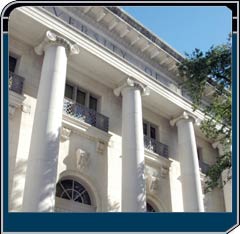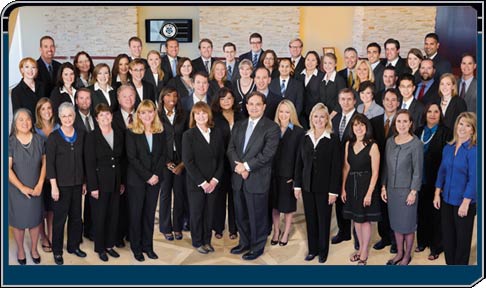Letter from the Executive Management
UTIMCO's investment strategy was thoroughly reviewed and discussed with the UTIMCO Board (the "Board"), the University of Texas System Board of Regents (the "Regents") and The University of Texas System staff last fall and again this past summer. An important element of the investment strategy is its gradual, multiyear implementation plan in recognition of the need to proceed cautiously and prudently, particularly with the certainty of cyclical swings.
Investment Activity
While it is obviously far too early to draw conclusions about the results of the changes to our long term investment strategy, it is the case that the implementation enacted during the past year has proven positive in the short term.
In implementing a long term investment strategy, staff works to add value in two ways: tactically deploy assets by overweighting or underweighting particular asset classes and hiring active managers with a mandate to outperform their respective benchmarks. We are pleased to report that UTIMCO employed both methods in order to deliver better than Benchmark results totaling approximately $357 million of additional earnings, $124 million through tactical allocation and $233 million through active manager selection.
 |
| The University of Texas System |
While statistics seldom capture the full story, in an effort to illuminate staff's efforts, over 600 meetings were held with our approximately 150 investment managers during the fiscal year. These were in addition to analysis of monthly or quarterly information provided by the managers, frequent communications with managers, and formal quarterly or semi-annual portfolio reviews. Staff also held over 1,200 meetings with prospective investment managers in addition to receipt and review of countless other investment proposals. This 'pipeline' of potential investments, resulted in approximately 60 new investments, roughly one-third of which were with private investment managers with whom UTIMCO already had an existing relationship.
Tactical Allocation
Approximately $1.27 billion, or over 7.0%, of the Endowment's assets, was redeemed from developed country public equity, and during the course of the year we were typically 3.5%-5% underweight in this asset class. Given the 13% decline that public equity markets experienced during the fiscal year, these redemptions proved positive for overall returns. And as we began Fiscal Year 2009, we remained underweight in these markets as they continued to decline.
We increased our exposure to less correlated and constrained managers (hedge funds) by approximately $436 million during the fiscal year and this part of our portfolio returned a positive 1.5%. Not only were these investments helpful in fiscal year 2008, but we are very optimistic that they will produce strong risk-adjusted results in the future given the world class funds we were able to access.
We also increased our private investments by over $1 billion during the year and this part of the portfolio netted 2.3% in the PUF and 3.7% in the GEF for the year. Over half of our increase in private investments took the form of credit-related investments, such as senior loans to large companies, which were underwritten to extraordinarily high returns due to 'forced selling' on the part of large investment banks that held the paper. Another 28% of the increase in private investments was spread across natural resources, real estate and emerging market investments. Less than 20% of the increase in private investments was due to traditional buy-out or venture investments, and this increase was the result of calls on previous years' commitments. We are also optimistic that these investments will produce strong risk-adjusted returns in the coming years.
In natural resources, as prices ran up, we reduced exposures during the later part of the fiscal year. These decisions proved particularly helpful as the beginning of Fiscal Year 2009 saw steep declines in this asset class.
As we began to gradually implement our strategic plan in real estate and emerging markets, however, declining markets negatively impacted our positions. Each of these asset classes saw new investments of approximately $350 million each. However, real estate markets fell 22% and emerging markets fell 10% during the fiscal year. These markets have fallen further during the beginning of Fiscal Year 2009. We remain committed to these markets for the long term and we will continue to carefully and cautiously deploy capital in these areas.
Finally, we brought our investment grade fixed income balances down by $711 million, although this asset class' benchmark posted a 5.1% gain. Despite the reductions, however, we remained overweight in this asset class by just over 2% versus our Policy Portfolio so relative performance was positive. We remain committed to our strategy as long term investors to manage our exposure in this asset class to lower, but prudent, levels.
Active Management
Staff actually spends the vast majority of its time identifying, selecting and monitoring external managers who employ a broad variety of strategies in a wide array of capital markets across the globe. Currently, UTIMCO relies on approximately 30 more traditional, 45 less traditional and 75 private investment managers. More traditional managers typically buy publicly traded securities in a specified market, less traditional managers typically hold both 'long' and 'short' positions often in a wide range of publicly traded markets, employ leverage and also may invest in some illiquid securities, and private investment managers explicitly assume illiquidity risk across a range of investments including distressed, real estate, natural resources, buyout, growth and venture capital.
 |
| The University of Texas Southwestern Medical Center at Dallas |
Our more traditional developed country public equity managers continued to underperform their market, and as we noted in last year's letter, we are focusing extensive resources on this portion of the portfolio. Over the past year we have made substantial redemptions and believe we have made significant progress in eliminating underperforming managers. We are now beginning our efforts to identify and select new active managers that we think will be able to deliver positive results versus average market performance. Bright spots in our more traditional book of investments include our fixed income, REIT and natural resources active managers.
UTIMCO's less correlated and constrained managers beat their benchmark by approximately 200 basis points. As we have said in prior letters, we are very bullish on our portfolio of hedge fund managers. This part of the Endowments has produced annual returns of approximately 10% with annual volatility of approximately 6% over the past ten years.
Our private investment portfolio under-performed its benchmark for the fiscal year. We view this as less concerning as it is difficult to accurately assess the performance of a long term private investment portfolio over a short time period. The private investment benchmark also reflects a mature, seasoned portfolio whereas our portfolio is less seasoned and thus is disadvantaged by the "J-curve" effect (early year fee drain and investments held at cost which is then expected to be more than offset in later years as investments are realized). A more meaningful long term measure of the private investment portfolio reveals that our since inception returns are well above the industry average.
 |
| The UTIMCO Team |